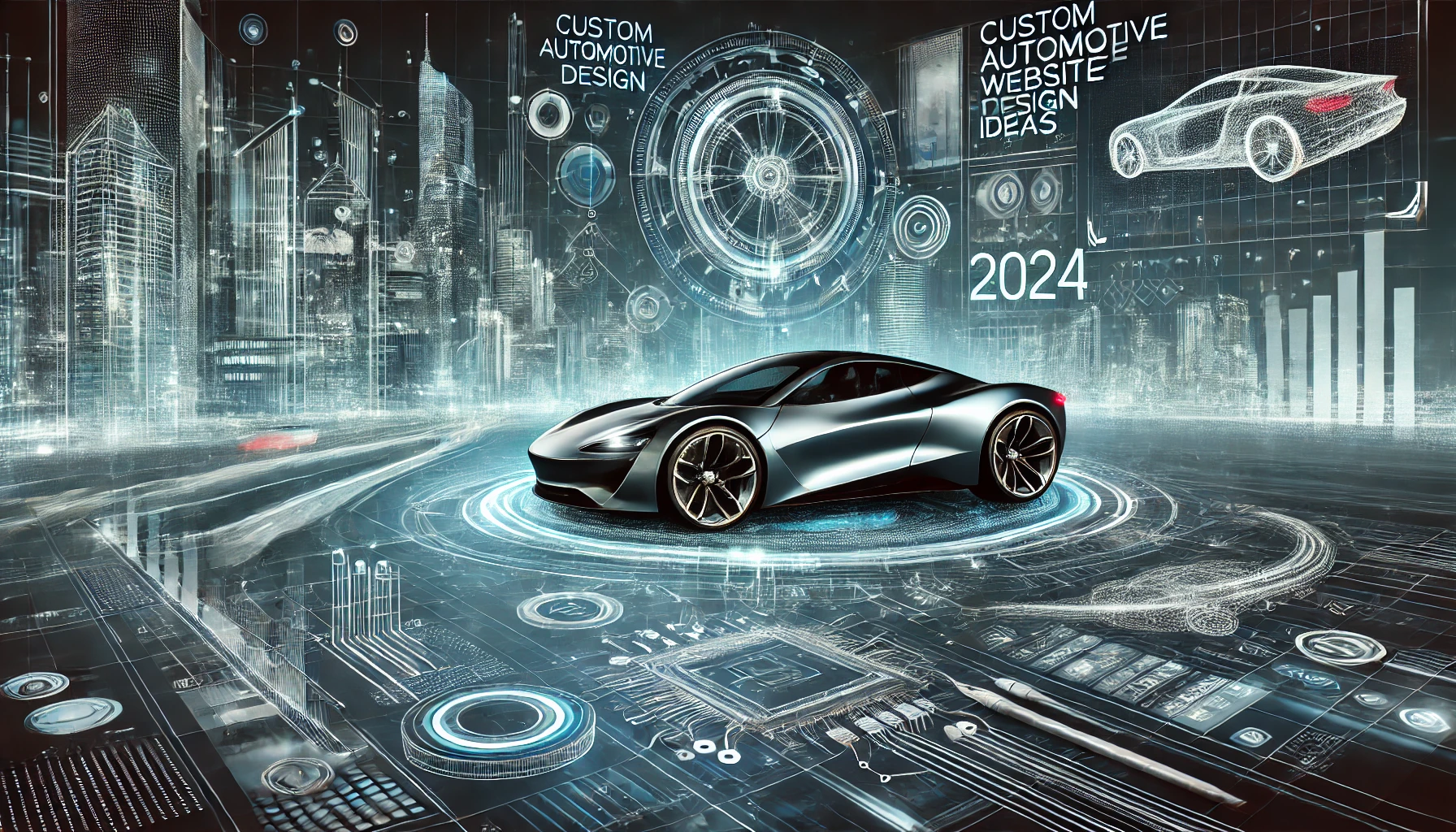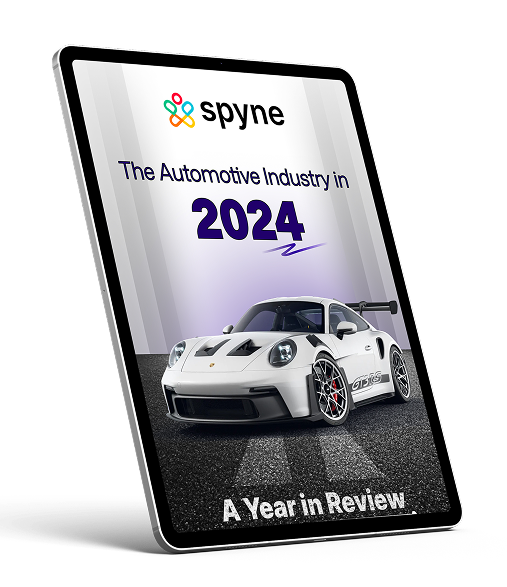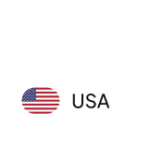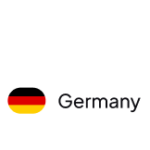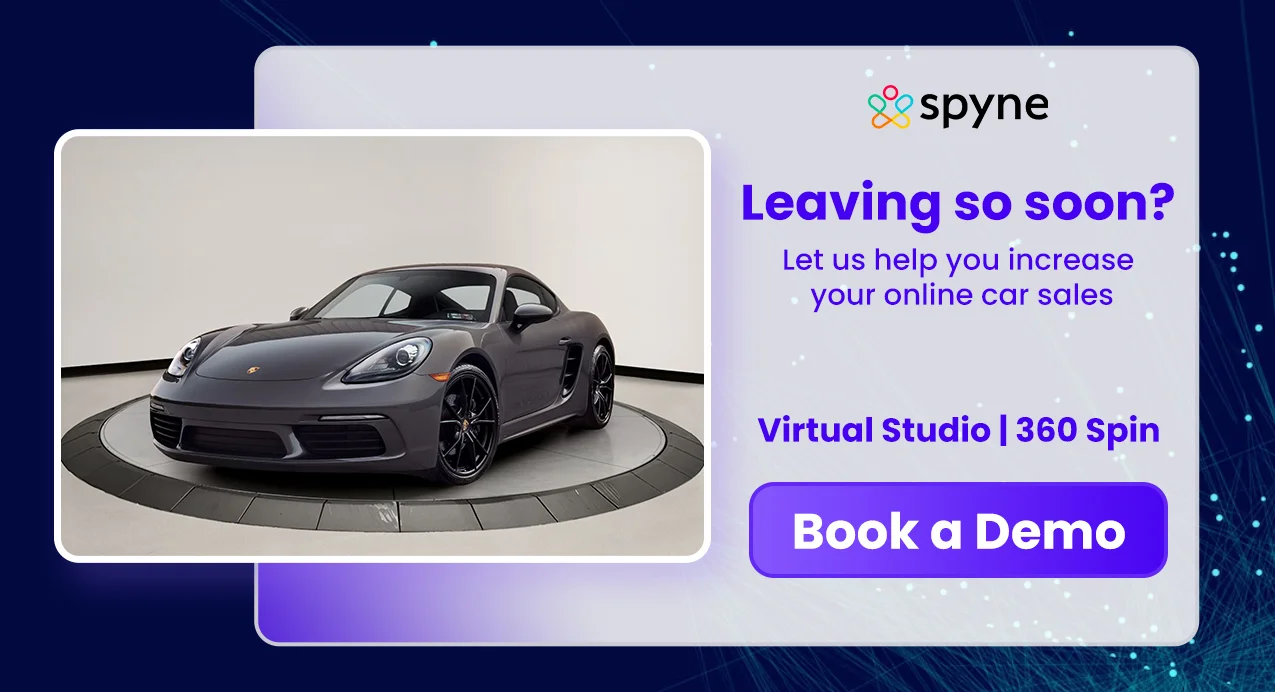In 2025, having a well-designed website is more important than ever for automotive dealerships. Your website is often the first thing customers see and; it plays a massive role in buying decisions. If your site looks good and is easy to use, visitors are more likely to stay, explore, and make a purchase. But they’ll leave and look elsewhere if it’s confusing or outdated.
A custom automotive website design lets you create a unique experience that matches your brand. It’s not just about looks—it’s also about ensuring the site works well on all devices, from smartphones to desktop computers. In today’s world, where most buyers start their car search online, you can’t afford a poor website experience.
In this blog, we’ll explore why custom website design matters for automotive dealerships. We will explore key design elements that can boost sales. They can influence buying decisions. We’ll also share some of the best website design ideas for 2025 and beyond.
What is a Custom Automotive Website Design?
A custom automotive website design is a unique, tailor-made site built for car dealerships and automotive businesses. Unlike a generic template, a custom design matches your brand and goals and meets your customers’ needs.
It aims to provide a seamless user experience. So, it will integrate features vital to the automotive industry. These include vehicle listings, virtual showrooms, and easy navigation for exploring car models.
Custom automotive websites engage visitors and showcase inventory. They encourage actions like booking test drives or contacting the dealership.
A custom design will make your website stand out from competitors. It will also provide a personalized experience for your audience and meet your dealership’s specific needs.
Importance of Custom Automotive Website Design
Creating a custom website for your dealership isn’t just about having a good-looking site. It’s about building trust, guiding visitors, and ultimately boosting sales. Let’s examine the key reasons why custom automotive website design is essential.
1. Making strong first impressions
Your website is often the first place a potential customer interacts with your dealership. A sleek, modern design makes a great first impression. It encourages users to stay and explore. An outdated or cluttered website may drive away visitors. They won’t give you a chance to win them over.
A solid first impression builds credibility. A good website shows that your dealership is professional and up-to-date, which builds trust with new visitors.
2. Seamless navigation equals better customer experience.
A good design isn’t just about appearance—it’s also about how easy the site is to use. Easy navigation helps visitors quickly find what they need, including a car model, service options, and contact info. Potential buyers may leave in frustration if your website is confusing or cluttered.
Simple, clear menus and well-organized content help users navigate your site, creating a smooth experience that encourages users to stay longer and learn more. They can also take action, like booking a test drive or contacting your dealership.
3. Boosting conversions through design
A custom design tailored to your dealership’s needs can directly boost conversions. This means more visitors will act, like filling out a form or calling your dealership. Clear call-to-action buttons, easy-to-read content, and optimized images boost conversion rates.
A site that is easy to use, attractive, and for your audience will convert casual visitors into paying customers. When design supports the user journey, it leads to better results for your dealership.
Key Elements of Effective Design
An effective automotive website design does more than just look good. It helps create a seamless experience for visitors, tells your brand’s story, and makes it easy for customers to find what they need. Let’s explore some key elements that make a design stand out.
1. Building brand identity with visual storytelling
Your dealership’s website should reflect its unique personality. Visual storytelling is one of the best ways to do this. You can create a personal and memorable site using images, colors, and layouts matching your brand. This builds brand loyalty. Visitors will recognize your style and associate it with trust and quality.
For example, high-quality images of your dealership, cars, and team members can show what makes your business unique. These visuals tell your story and connect with your audience, making them more likely to choose you over competitors.
2. Using strategic color schemes and typography
The right colors and fonts can greatly affect visitors’ feelings about your site. Color choices can evoke certain emotions—blue might give a sense of trust, while red can create urgency. Choosing colors that reflect your brand and industry can help create a cohesive and professional look.
Typography also plays a role in making your website readable and professional. Fonts should be easy to read, especially on mobile devices. A simple, clean font can give your site a polished feel, while a bold or unique font can add personality.
3. User-friendly interfaces for enhanced experience
A website should be easy to navigate, no matter who uses it. This means ensuring menus, buttons, and links are easy to find and understand. A user-friendly interface guides visitors through the site with no confusion or frustration.
Simple design choices improve the experience. For example, place menus at the top of the page, use clear icons, and keep content organized. The more accessible visitors find what they’re looking for, the more likely they are to stay on your site and take action.
Key features to include in a custom automotive website:
- Vehicle Listings: Allow visitors to browse your inventory easily.
- Interactive Features: Include virtual tours, test drives, or car configurators.
- Responsive Design: Ensure your site works seamlessly across all devices.
- Simple Navigation: Provide clear menus and a clean layout for easy use.
- Calls-to-Action (CTAs): Encourage users to take actions like booking a test drive or contacting the dealership.
Design Strategies and Techniques
Creating a custom automotive website requires the right design. It must ensure a seamless user experience. It’s not just about how the website looks; it’s about how it functions and meets your visitors’ needs. Here are some key strategies to consider when designing your dealership’s website.
1. Collaborating with professional designers
Working with a professional designer can make all the difference. Experienced designers understand what makes a website functional and visually appealing. They know how to build a website that works for your business and audience. Collaborating with a designer ensures your site is tailored to reflect your brand and meet your goals.
A designer will bring creative ideas. They will help you think beyond automotive website templates to build an outstanding website. This work can create a professional site that gives your dealership accurate results.
2. Responsive designs for every device
In today’s mobile-first world, your website must look great on all devices, whether desktop, tablet, or smartphone. Responsive design allows your website to adapt to any screen size and ensures a consistent, seamless user experience.
With more customers using mobile devices to search for cars, your website must be easy to navigate and read on smaller screens. Responsive automotive website designs improve user experience and boosts your site’s search ranking. Mobile-friendly sites tend to perform better in search results.
Platforms like Spyne can optimize your visuals for every screen size. They will ensure your high-quality images and videos look perfect on desktops, tablets, and smartphones. Spyne’s AI platform helps dealerships create stunning, responsive visuals. They engage users on all devices.
3. Incorporating interactive graphics and multimedia
Engaging visitors means using more than just text and images. Interactive graphics, videos, and multimedia elements can make your website come to life. For example, adding video tours or virtual test drives can give customers a richer, more immersive experience.
Interactive features, like a car configurator or payment calculator, let users engage with your site. These tools keep visitors on your site longer and help users make better decisions. This brings them closer to contacting your dealership or buying.
Interactive features are now essential for engaging users. These include 360-degree virtual tours and high-quality video walkthroughs. Spyne offers advanced tools for creating interactive content. It brings vehicles to life, making it easier for buyers to explore every feature online. With Spyne’s tools, you can create immersive videos that guide potential buyers through a virtual showroom experience.
Core Features in Winning Designs
Certain features are standard to all high-performing automotive websites. These features enhance the user experience, help drive conversions, and build trust. Let’s look at the key features that set successful websites apart.
1. Prominent call-to-action buttons
Call-to-action (CTA) buttons are crucial in guiding users through the website and prompting them to take action. Effective websites use clear, prominent CTAs. Examples include “Book a Test Drive,” “Explore Inventory,” and “Get a Quote.” These CTAs encourage visitors to engage with the dealership. These buttons are often placed at the top of the page or after a product description, making them easy to find and act upon.
2. Clean layouts and enhanced accessibility
A clean, clutter-free layout makes the site more appealing and helps visitors find information more easily. Clear headings and concise text will keep users from getting overwhelmed while browsing. Accessibility features, like clear fonts and contrasting colors, improve usability. They help everyone, including those with visual impairments.
3. Incorporating customer testimonials and interactive features
Customer testimonials are powerful tools for building trust. Your website should feature testimonials and reviews. They can reassure potential buyers that others had good experiences with your dealership. Successful websites use interactive features to engage users. These include live chat, car configurators, and virtual tours. They help users explore options more efficiently, keeping them on the site longer and guiding them to decisions.
Adapting to Consumer Expectations
As consumer preferences evolve, so must your website. Today’s buyers expect more from online experiences, and automotive website providers must meet these new demands. Keeping up with the latest trends and tech will help your dealership stay competitive and engage potential customers.
1. Staying updated with the latest web technologies
To meet consumers’ ever-changing demands, dealerships must adopt the latest web technologies. This means ensuring your website is fast, secure, and optimized for all devices. Chatbots, vehicle configurators, and automated booking can improve user experience and streamline interactions. New technologies like augmented reality (AR) and virtual reality (VR) are also becoming more popular. They let users experience vehicles in a new way.
Some dealerships now offer AR experiences. Buyers can “place” a car in their driveway and walk around it in real-time using their smartphones. This technology enhances the user experience and sets your dealership apart.
2. Offering immersive digital showrooms and configurators
Digital showrooms and vehicle configurators are becoming essential tools for engaging users online. A digital showroom lets customers explore your inventory from home. A vehicle configurator lets them customize their dream car with different colors and options. These tools make the car-buying experience more interactive and fun, which can lead to higher conversion rates.
In 2025, immersive online experiences will attract tech-savvy buyers to dealerships. These buyers prefer to research and decide from home.
3. Designing to meet evolving consumer expectations
Consumer expectations constantly change, and staying on top of design trends is crucial. As buyers become more comfortable with online purchasing, they expect seamless, user-friendly experiences. Websites should be easy to navigate, mobile-friendly, and visually appealing. Focusing on simple, modern design with personalized elements can make users feel more connected to your brand.
As online shopping grows, automotive dealerships must adapt. Those that don’t risk being left behind. Modern design, engaging content, and new technology will make your car dealer website stand out and attract visitors.
Success Stories: Inspirational Automotive Website Designs
Successful automotive websites can inspire your dealership’s design. These brands excel at making websites. They are visually appealing, functional, and customer-focused. They leave a lasting impression. Let’s explore a few examples that showcase how design can elevate a brand.
1. Alfa Romeo: Sleek and modern style with user-friendly navigation
Alfa Romeo’s website stands out with its sleek, modern design and easy-to-navigate interface. The homepage immediately captures attention with high-quality visuals and minimalistic design elements. Navigation is simple, allowing visitors to quickly explore the vehicle lineup or learn more about the brand’s history. The website focuses on clean layouts and intuitive user paths, creating a smooth, enjoyable user experience.
2. Tesla: Minimalist aesthetic with captivating multimedia
Tesla’s website exemplifies the power of simplicity paired with multimedia. It uses a minimalist aesthetic, letting the images and videos do the talking. High-res images and videos of Tesla’s vehicles play a significant role. They allow users to explore the cars from multiple angles while keeping a clean, clutter-free design. The use of multimedia makes the website immersive, capturing the attention of potential buyers from the first click.
3. BMW: Elegant typography and strategic menu placement for ease of use
BMW’s website combines elegance with functionality, making navigating easy for users. The bold and elegant typography creates a premium feel that reflects the brand’s reputation. The navigation menu’s placement helps users quickly find info on vehicles, services, and offers. BMW’s website design emphasizes clarity and ease of use while delivering a luxury brand experience.
How to Choose the Right Automotive Website Designer?
Building a custom automotive website is no small task; choosing the right designer is critical to getting it right. Whether you work with an individual or a design firm, finding someone who understands your brand, audience, and goals is essential. Here’s how to make the right choice.
1. Finding a designer who understands your brand
When selecting a designer, look for someone who understands your dealership’s identity and vision. A designer can translate your brand’s personality into a functional, visually appealing website. They’ll also be familiar with the automotive industry and understand the specific needs of car buyers.
Ask potential designers for examples of their past work. Focus on projects in the automotive industry. This will give you a sense of their style and ability to create a website that reflects your brand’s values. Clear communication is vital so they listen to your ideas and provide input that aligns with your goals.
2. Exploring design contests for fresh ideas
If you’re unsure what design direction you want, participating in design contests can help you explore new possibilities. Design contests let you get ideas from many automotive website designers. You can choose from a variety of creative concepts. This process can help you discover a design style you may not have considered and give your website a fresh, unique look.
Contests also offer a cost-effective way to find talent; you’ll only need to pay for the winning design. This option works best if you want to see a broad range of ideas before making a final decision.
Platforms like Spyne can enhance your website’s visuals when working closely with designers. Spyne’s AI tools let dealerships create pro-grade images and videos. They can highlight what matters to customers. This will ensure the final design is both attractive and engaging.
3. Collaborating one-on-one for custom web solutions
A designer can provide a tailored web solution for dealerships wanting a personalized approach. Working closely with a designer builds a strong relationship and ensures your website matches your vision.
This approach is ideal for dealerships with specific goals or unique branding needs. Working directly with a designer gives you more control. You can adjust things to get a final product that meets your needs.
Conclusion
Custom automotive website design is more than just looks. It’s about creating a seamless, engaging buyer experience that drives sales. Your website is the digital front door of your dealership, and it needs to reflect the quality and professionalism of your brand. A custom design that prioritizes user experience can build trust, engage visitors, and guide them through the buying process.
In 2025, the importance of staying updated with the latest design trends and technologies cannot be overstated. Customers expect fast, mobile-friendly websites that are visually appealing and easy to navigate. Interactive tools, digital showrooms, and responsive designs make a big difference. They help capture and hold attention.
Choosing the right automotive website builder is vital in ensuring your website meets these demands. Finding the right talent is critical to your vision. So, whether you choose a one-on-one collaboration or a design contest, it is essential to find the right talent.
Custom Website vs. Template-Based Website
| Feature | Custom Website | Template-Based Website |
| Design Flexibility | Fully customizable, unique to your brand | Limited customization with preset layouts |
| Functionality | Tailored to your business needs | General features, not specific to your business |
| User Experience | Optimized for seamless navigation and interaction | Basic, generic user experience |
| Branding | Built specifically to reflect your brand | Can feel generic and used by many others |
| Cost | Higher investment but greater long-term ROI | Lower initial cost, but limited customization |
| SEO Optimization | Customized for SEO best practices | May require extra efforts to optimize |
A well-designed website is a powerful tool. It boosts your dealership’s visibility, builds customer loyalty, and increases conversions. Prioritizing choosing the best automotive website developers and web design can help your dealership stand out online. It will drive long-term success in a competitive market.

